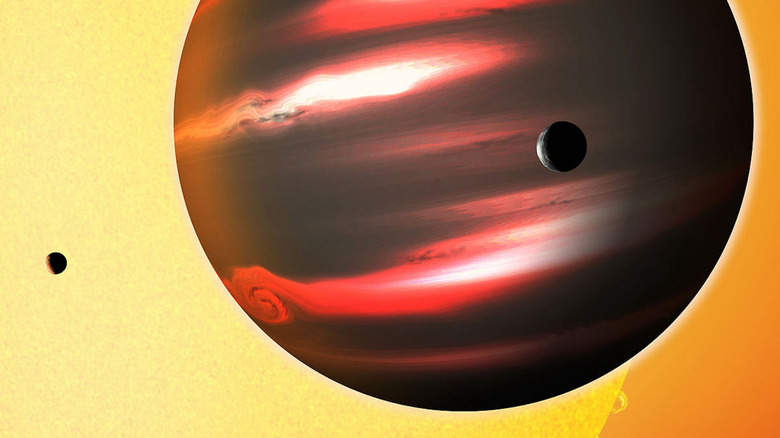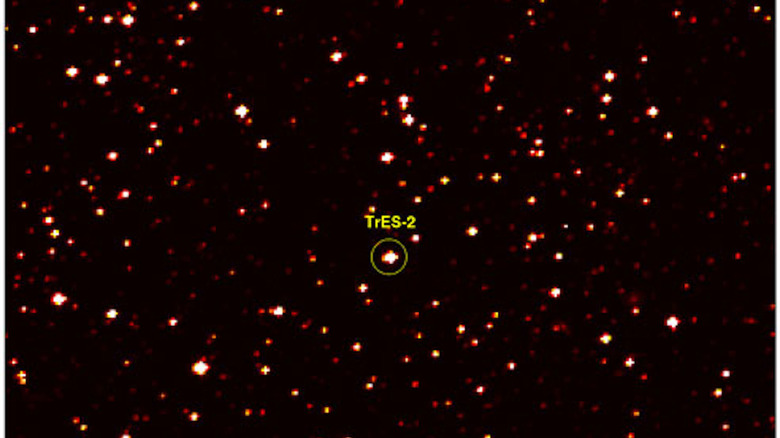This Exoplanet Is The Darkest Planet That Orbits A Star In Our Universe
One of the primary purposes of space travel is to determine what lies beyond Earth's solar system and whether perhaps there are other inhabitable places like planet Earth. As noted by NASA, scientists can now confidently conclude that so-called exoplanets, or planets outside of our solar system, exist thanks to NASA's Kepler Mission, launched in 2009. So far, researchers have discovered three types of exoplanets: gas giants similar to our own solar system's Jupiter, ice giants similar to Neptune and Uranus, and "hot-super-Earths," which don't really resemble anything familiar to us but got their names because they are much, much larger than planet Earth.
Thus far, all of the exoplanets that have been discovered by the Kepler Mission have proven uninhabitable. But one planet discovered in the Draco star constellation 750 light-years away would be particularly treacherous for human life. Meet the darkest planet that orbits a star in the universe: TrES-2b.
The darkest planet discovered thus far
TrES-2b is one of the most extreme exoplanets that has yet to be discovered because of how dark it is. But how dark is that, exactly?
As described by NASA, planet Earth's atmosphere reflects nearly one-third of the light that it receives from the sun, with the remaining energy absorbed either by the Earth's surface or in transit through vapor or the ozone layer. In contrast, TrES-2b — called "the planet of eternal night" by NASA — bounces back less than 1% of light it receives from its star, according to a study published in Monthly Notices of the Royal Astronomical Society. In fact, the planet reflects less light than charcoal or black acrylic paint, which absorbs nearly all light. This essential translates to little to no difference between the planet's day and night cycles, with it spending the majority of its rotation in perpetual darkness.
What else do we know about TrES-2b?
According to a 2006 study published in The Astrophysical Journal, TrES-2b was the second gas giant exoplanet discovered in the Kepler Mission and is continuously monitored by satellite imagery. Dubbed a "hot Jupiter" exoplanet, TrES-2B has actually about 1.5 times the mass of the Jupiter in our solar system (via NASA). Unlike the planets in our solar system, TrES-2b orbits its star — dubbed GSC 03549-02811 — in the very short time of roughly 2.5 days.
Lacking clouds or an atmosphere that can reflect light, and located so close to the star it orbits, the exoplanet is heated to a whopping 1,800 degrees Fahrenheit, according to Space.com. The air that swirls around inside it is as hot as lava. In fact, some researchers hypothesized that its atmosphere could be filled with light-absorbing particles like sodium, potassium, or gaseous titanium oxide that make it even darker. Eerily, scientists think TrES-2b isn't completely dark, but rather glows a reddish amber, almost like the coals of a fire.


